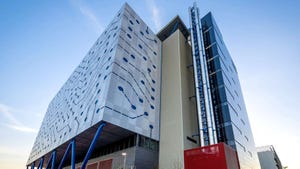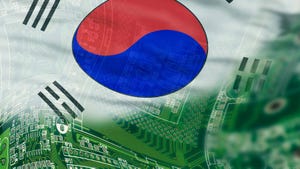What Is Quantum Networking, and What Might It Mean for Data Centers?What Is Quantum Networking, and What Might It Mean for Data Centers?
While not ready for prime time, the concept of quantum networking is gaining traction. Let's take a look at how it works and how it may affect data centers in the coming years.
.jpg?width=1280&auto=webp&quality=95&format=jpg&disable=upscale)
By now, you may have heard about how quantum computers could transform data centers.
But what about quantum networks, an equally critical ingredient in taking full advantage of quantum computing? In many respects, quantum networking presents an even more complex challenge for data center operators than quantum computers themselves.
Here's why, along with the types of changes data center operators may need to make to ensure quantum computers can communicate effectively over the network.
What is Quantum Networking?
Quantum networking is the use of quantum mechanics to exchange data between digital devices.
This means that when we talk about quantum networks, we're talking about more than simply connecting quantum computers using conventional network infrastructure. Quantum networking is a fundamentally new approach to networking.
Conventional networks shard data into packets and move them across wires or radio waves using long-established networking protocols, such as TCP/IP. In contrast, quantum networks move data using photons or electrons. It leverages unique aspects of quantum physics to enable powerful new features like entanglement, which effectively makes it possible to verify the source of data based on the quantum state of the data itself.
How Does Quantum Networking Work?
At present, quantum networking remains a largely experimental domain, and researchers have proposed varying strategies for building quantum networks.
That said, in most cases quantum networks operate based on the following key principles:
Data is transmitted over quantum networks in the form of qubits. In most cases, qubits are individual photons or electrons.
Quantum physics makes it possible to establish permanent links between qubits – a concept known as entanglement. Using this capability, quantum networking allows data to be transmitted over networks in ways that prevent the manipulation of the data, enabling a level of security that is not possible on conventional networks.
Entanglement also makes it possible to validate that source of data transmitted on a quantum network by embedding information about the source into the message itself. Because attempts to modify the source information would change the state of all entangled qubits in the message, it would be impossible to manipulate this data in a non-detectable way.
Thus, in theory, quantum networking offers a powerful means of transmitting information over networks with a level of built-in security and privacy that conventional networks just don't support – at least not with the help of add-ons like network encryption.
However, a key difference between solutions like conventional network encryption and quantum networking features like entanglement is that the former can potentially be defeated in various ways because encryption is based on software algorithms that can have flaws. In contrast, capabilities such as quantum entanglement leverage very low-level physics principles to protect data, which translates to much stronger security for data that flows over networks.
The Challenges of Quantum Networking
While quantum networking offers important advantages compared to traditional networks, it also presents some unique challenges.
Chief among them is the fact that transmitting qubits over long geographic distances is hard because the state of qubits may change if they encounter interference – and the longer qubits have to travel, the higher the risk of interference.
To address this issue, quantum researchers are working on quantum repeaters that can copy qubits reliably and move them across networks. But so far, progress in this area remains slow.
Implementing quantum networks is also challenging at present because nothing resembling standardized quantum networking protocols exists. In other words, there is no equivalent of the TCP/IP protocol that tells quantum devices how to encode data and move it across a quantum network in ways that other quantum computers can understand.
This is an issue that can likely be solved in time (at first, classical networks lacked standardized protocols, too), but until quantum researchers and vendors collaborate effectively around networking standards, nothing resembling a quantum network that is ready for real-world use is likely to exist.
Quantum Networks' Impact on Data Centers
Because quantum networking remains a theoretical and experimental domain, it's challenging to say at present exactly how quantum networks might change data centers.
What does seem clear, however, is that data center operators seeking to offer full support for quantum devices will need to implement fundamentally new types of network infrastructure. They'll need to deploy infrastructure resources like quantum repeaters, while also ensuring that they can support whichever networking standards might emerge in the quantum space.
The good news for the fledgling quantum data center ecosystem is that true quantum networks aren't a prerequisite for connecting quantum computers. It's possible for quantum machines themselves to send and receive data over classical networks by using traditional computers and networking devices as intermediaries.
But those networks don't deliver the sophisticated privacy and security protections of quantum networking, or allow quantum devices to exchange data in their native format. Reaching that stage will require significant new investment in quantum networking infrastructure and software inside data centers – a process that is likely to take many years, given the current state of quantum networks.
About the Author
You May Also Like









